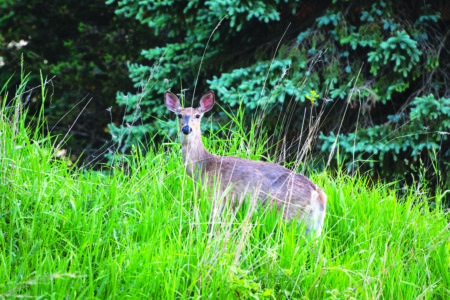As thaw begins, so does sap run
The temperature finally broke 32 degrees since, I can’t remember, was it Halloween? The snowbanks are starting to shrink during the day and you can hear water dripping off the buildings and trees. I’ve seen people outside in shorts.
All of this is a sure sign spring is on the way. I can even smell it. I apologize if I’m jumping the gun on this. I will not be surprised if we see another snowstorm or two but I’m getting excited.
With the impending change in season comes change in the weather. This past week we had relatively warm days that began to melt and soften the snow. At night it would drop below 32 degrees and freeze everything back up again. These typical temperature fluctuations during this time of year is what gets the sap running in the sugar maple trees. If folks haven’t started yet, it won’t be long before people start tapping trees to collect the sap and start making maple syrup. The tapping season will then stretch on for about four to six weeks before the sap develops an off flavor and is no longer suitable for making syrup. There is a lot of work involved in making syrup from sap from collecting the sap to boiling it down into syrup. It takes at least 34 gallons of sap to make just one gallon of syrup.
The sugar maple isn’t the only tree that can be tapped but it is certainly the most popular. Other varieties of maple such as the red and silver maple are also suitable for tapping but they typically don’t have as high of a sugar concentration so it takes more sap to make a gallon of syrup. The butternut tree contains a little more sugar so it takes around half as much sap to produce syrup.
I’m curious of why this isn’t being done on a commercial scale. Another tree gaining popularity in regions where they are prevalent is the black walnut. This syrup apparently doesn’t have a flavor similar to maple syrup but is starting to become commercially available. One of the most bizarre trees I came across that people are using sap to make syrup is the blue spruce tree. The harvest of the sap isn’t being done by tapping but by other means. I’m not sure how that would taste.
Another popular tree being tapped is the white birch. It takes nearly double the amount of sap to produce one gallon of syrup but it is being done commercially. I have never had this syrup but have read it tastes a little more like molasses. Other birches such as the yellow and black birch have also historically been tapped for their sap. The sap can either be drank straight or allowed to ferment into a birch beer. These drinks have been used as a folk remedy to treat a variety of ailments all over the northern hemisphere.






